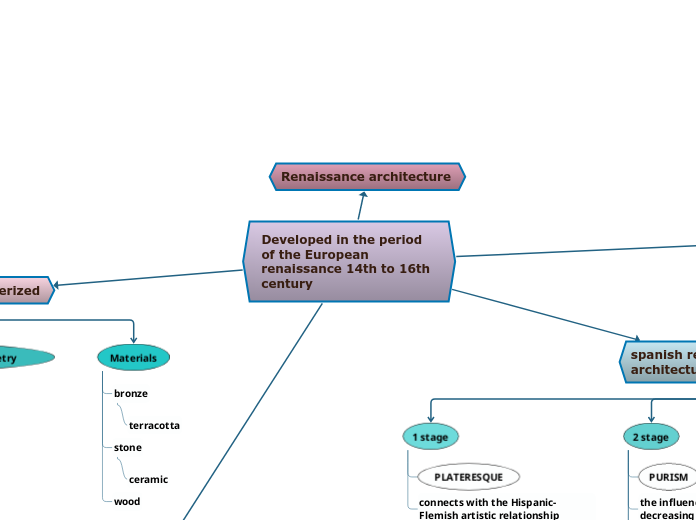Developed in the period of the European renaissance 14th to 16th century
Renaissance architecture
characterized
use of mathematics and geometry
take up classic models
seek perfection and beauty
be careful with the proportion
balanced and harmonious
balanced and harmonious
formal, single
Predominance of horizontal lines
use of arches, domes, vaults and columns
Materials
bronze
terracotta
stone
ceramic
wood
Renaissance architectural works
Sistine Chapel
Cathedral of Saint Mary of the Flower
Assumption of Mary Cathedral
Additional info
Additional info
Century XV
Renaissance man looked to the Greco-Roman world as a model for his contemporary society.
influence of nature
creación suprema
close to perfection
autonomous value
Religious topics
enormous influence of classical Christianity
Subtopic
anthropocentrism and humanism
leaves theocentrism to enter anthropocentrism
artistic manifestation
major importance
Subtopic
spanish renaissance architecture
1 stage
PLATERESQUE
connects with the Hispanic-Flemish artistic relationship
2 stage
PURISM
the influence of gothic was decreasing
refined and orthodox style
Greco-Roman inspiration
3 stage
HERRERIAN
Predominance of construction elements
decorative absence
divided into two levels
first level
supported by three columns
second level
drum crowned with hemispherical dome
Renaissance man looked to the Greco-Roman world as a model for his contemporary society.
Temple of San Pedro
Donato Bramante
They have a commemorative motif considered as a manifesto of the architecture of the Renaissance classism
materials
granite
marble
stucco
